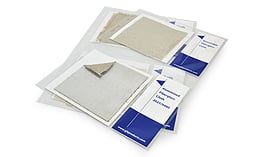
This concept is often misunderstood. When do I need to block sound using sound barrier products? When do I need to absorb sound using acoustic treatment products? The answer…well, it depends. Let’s look at a few examples.
Hotels
Have you ever lost sleep when staying in a hotel room? Lost sleep…not because the mattress was too hard or because the pillow was too soft…but because the couple in the room next to you sounded like they were on their honeymoon! The adjoining wall between the two rooms is literally SCREAMING FOR SOUND BLOCKING products. Many hotels use various methods and materials, like mass loaded vinyl, to prevent situations like this from occurring. But every method has one goal, to prevent the sound from transmitting through the wall to the adjoining room. It doesn’t matter how loud it is in the Love Bird’s room. All that matters is you can’t hear them in your room.
Noisy Restaurants
Have you ever been in a restaurant that is so noisy you can barely hear the person sitting across from you? It’s a common situation I believe we can all relate to. Many restaurants are focused on appearance and cleanliness. This leads restaurants to use hard, reflective constructions surfaces. Think tile floors, hard table tops, glass, exposed ceilings, etc. While these surfaces are hygienic and look great, they are horrible for absorbing sound! In this type of environment there are very few soft, porous materials to receive and dissipate sounds waves. The sound waves bounce off the reflective surfaces continually, thus creating a very noisy space filled with echoes. This type of situation is SCREAMING FOR SOUND ABSORBING materials. Some carpet, acoustic ceiling tiles, or fiberglass wall panels would go a long towards quieting the room and making it easier to hear conversations.
How does this translate to industrial applications?
Let’s go back to the first question. When do I want to block sound and when do I want to absorb it? The same answer applies to industrial applications, it depends.
Noisy Pipes
Sound blocking products are commonly used to quiet down noisy pipes. Like in our first example with the hotel room, it doesn’t matter how loud it is inside the pipe (Honeymooner’s room). The important thing is that the noise stays inside the pipe. Once treated, the pipes will not be obnoxiously loud to those who have to work around them (Adjoining Hotel room). This is a situation where sound attenuating products like mass loaded vinyl (MLV) are often prescribed. That being said, adding absorbing materials like mineral wool will make the sound blocking products more effective. But that topic is for a later post.
Noisy Equipment
Let’s say you have a very loud piece of equipment on a factory floor. OSHA is mandating that the noise levels need to be reduced to safe levels. What do you do? You can construct a wall to surround the equipment with sound blocking materials. That will help workers in other parts of the factory, but not the workers who need to operate that piece of equipment. How do you reduce their exposure to harmful noise levels? Remember our noisy restaurant example? You need to add acoustic absorbing materials to dissipate the sound in and around the equipment. This is a common situation where you need products for both SOUND ATTENUATION and SOUND ABSORPTION.
For more information, download our free guide to Acoustic Insulation for Lagging Applications:



